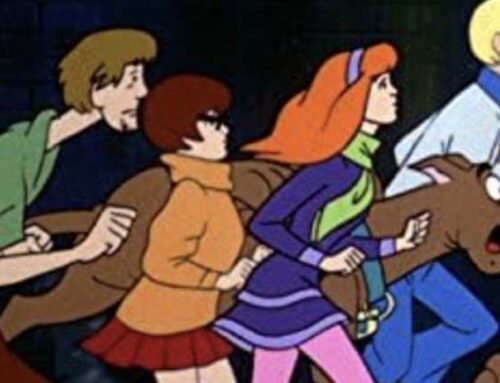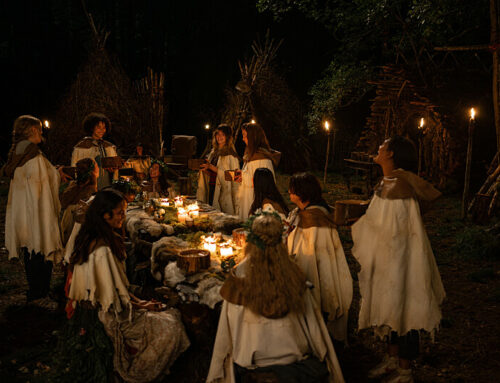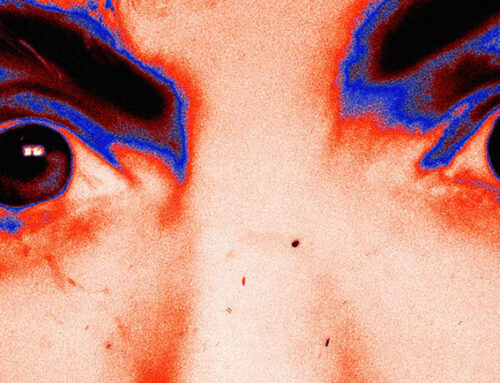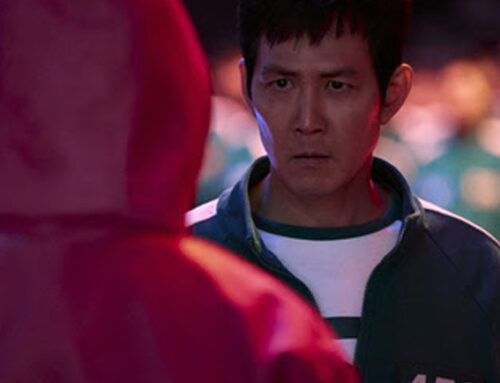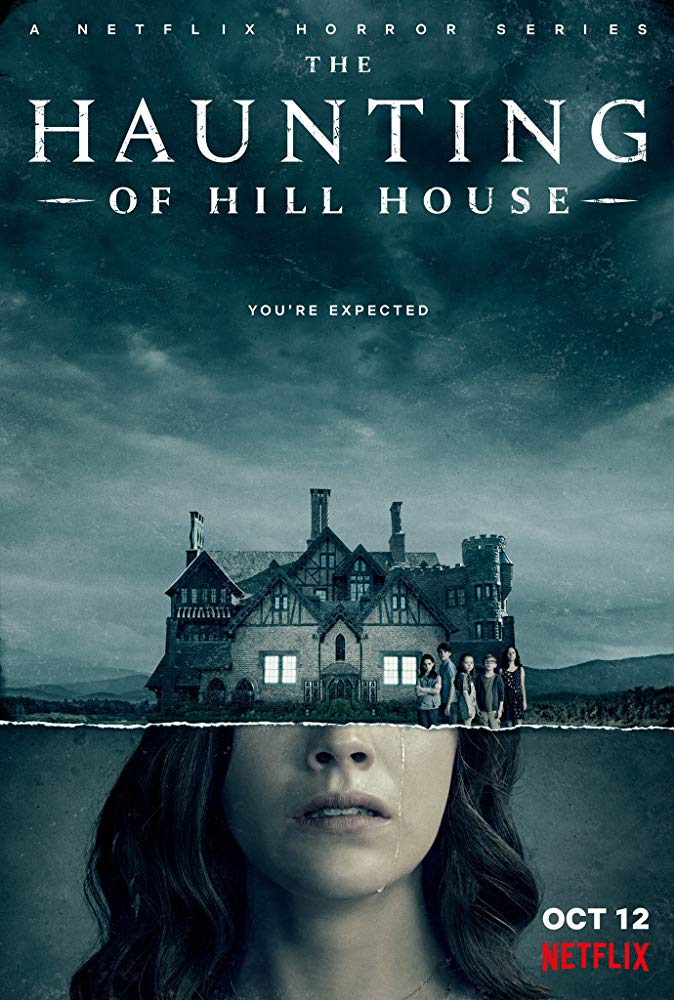 This week Netflix held a very special costume design showcase. NETFLIX FYSEE was held at Raleigh Studios Stage E giving the remarkable talents of Jennifer Rogien (RUSSIAN DOLL), Beth Morgan (GLOW), Allyson Fanger (GRACE & FRANKIE), Kemal Harris (HOUSE OF CARDS), and Lynn Falconer (THE HAUNTING OF HILL HOUSE) a chance to talk about the craft of costume design. Being HorrorBuzz we jumped at the chance to speak with anyone about horror and what it takes to design and produce the costumes worn the inhabitants of Hill House.
This week Netflix held a very special costume design showcase. NETFLIX FYSEE was held at Raleigh Studios Stage E giving the remarkable talents of Jennifer Rogien (RUSSIAN DOLL), Beth Morgan (GLOW), Allyson Fanger (GRACE & FRANKIE), Kemal Harris (HOUSE OF CARDS), and Lynn Falconer (THE HAUNTING OF HILL HOUSE) a chance to talk about the craft of costume design. Being HorrorBuzz we jumped at the chance to speak with anyone about horror and what it takes to design and produce the costumes worn the inhabitants of Hill House.
However, there was one small catch.
Full disclosure, I have not seen all of The Haunting of Hill House. No knock against it to be sure, but time seems to be a rare commodity at the moment and it was one of those things that I knew I needed to see. With this chance to discuss the show with costume designer Lynn Falconer, I immediately began a binge session and got through four remarkable episodes before I had to pause streaming and head off to the Netflix FYSEE event.
I am now hooked, thank you very much. How did Falconer concoct all of the beautifully creepy looks on the hit Netflix show? Was there more too it than just creating old, moldy, sometimes bloody garments? Of course, there was.
Before the panel discussion at NETFLIX FYSEE, HorrorBuzz was given the opportunity to dive deep and explore costume design with Falconer on the hit Netflix show.
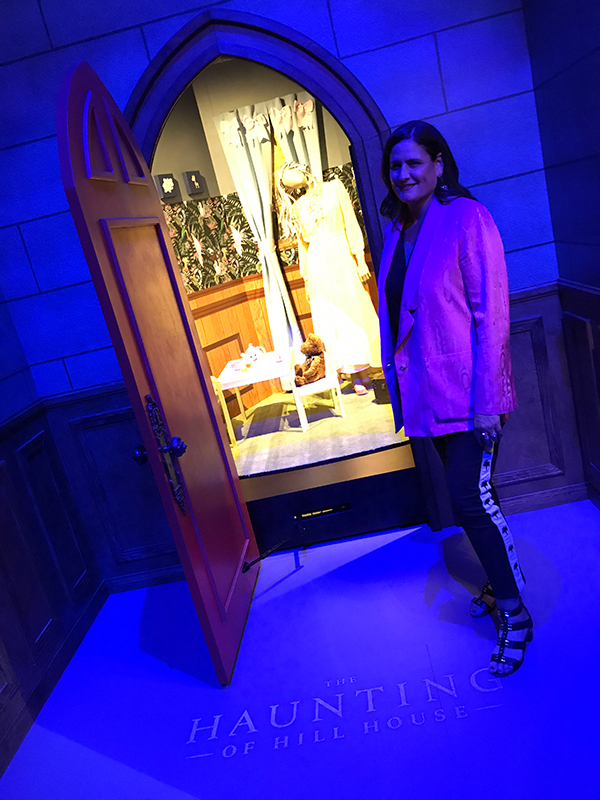
Costume designer Lynn Falconer stands in front of a display of her work at the NETFLIX FYSEE event.
We now join the conversation…
Lynn Falconer: What’s funny about you saying that you have only gotten to episode 4 is that when we got the job we were only at episode 3 or 4.
Norm: What? How does that work?
Lynn: Well, in traditional television shows you would generally work in a linear fashion. But with this show, we would have elements of episode 10 in episode 1 and I had no idea why what I was doing was going to work. I had a light outline, but…
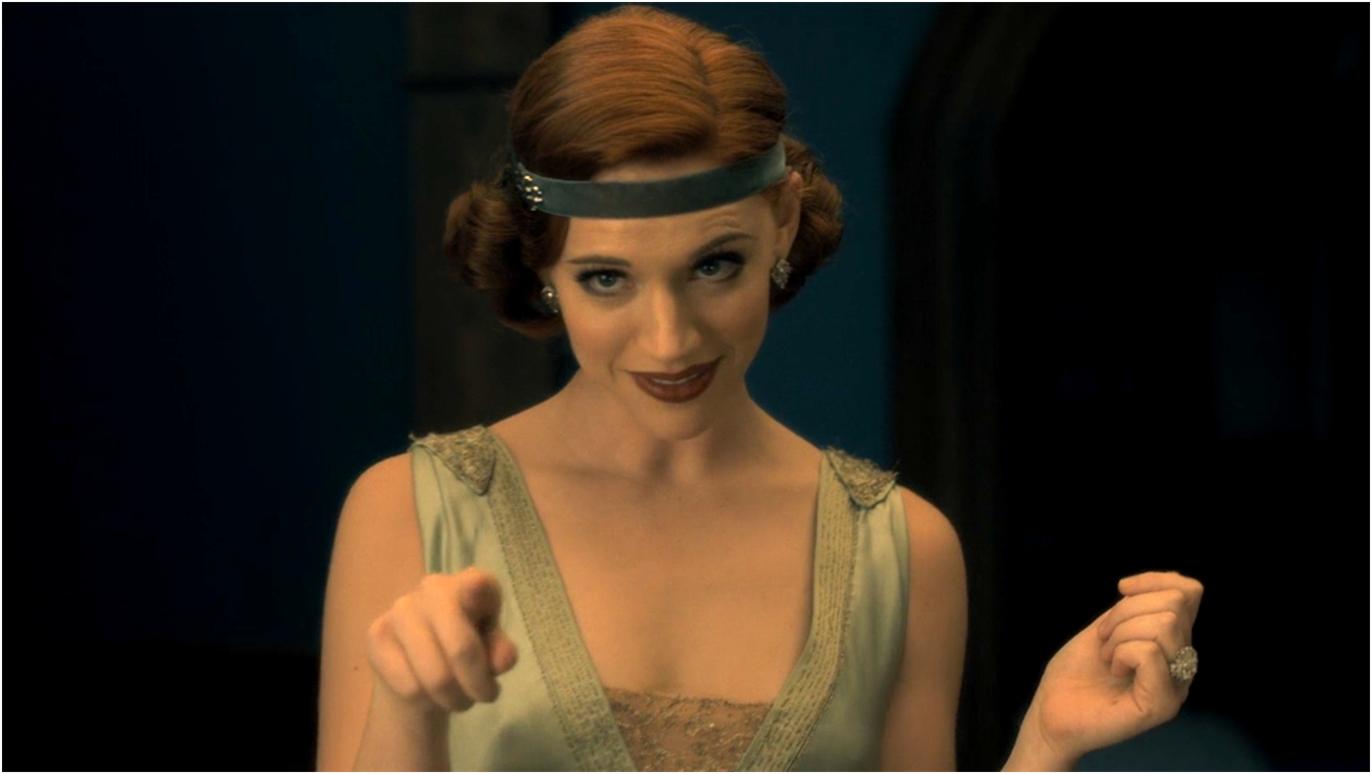 Norm: Yeah because the show jumps around a LOT
Norm: Yeah because the show jumps around a LOT
Lynn: Yeah, that’s what Mike Flanagan (the show’s creator) does. He was an editor and he’s got that computer mind and he weaves these tapestries together. He’s just a genius.
I’m used to knowing what happens at the end. I could put somebody in a pair of pants that have no pockets and, what if later it’s scripted that the character pulls something out of his pocket? I always go back to that pocket symbolism because, if I don’t know everything that is needed then it’s a failure on the costume designer’s fault. That was the biggest challenge.
With some of the bigger costumes, like with Olivia, I would kind of just have to show them to Mike and ask, “Are we okay with this?”
Norm: Did they give you a checklist? Like this costume needs to do this and this costume needs to do that?
Lynn: Yes absolutely. I mean I knew about the ghosts, and I thought maybe, possibly Olivia was, you know. Sorry, I don’t mean to give any spoilers.
Norm: I know about the Tall man and the Bent Neck Lady.
Lynn: Ah, yes I love that scene with him under the bed and Young Luke is like (Makes a terrified face) Ahhhhhhh! I die. That was his first gig too!
Norm: He’s good!
Lynn: He is! So, right so when you say you have only seen 4 episodes I was kind of in the same boat. I knew Olivia was connected to the Hill House family, so I was kind of working on that. It was just building a tapestry as you go. That non-linear element meant that when we were trying to put a closet together for a character we had to do it differently. Normally you would have a jacket and two pairs of pajamas and you would do the first pair and the second pair, the work on the first pair again. That whole regular formula that we often use to make it look real was turned on its head because you had 10 hours that were being woven together. A lot of times the day breakdown just didn’t make sense, it didn’t work. There was also a lot of stuff that happened at night.
Norm: Right, so did you have to consider the lighting?
Lynn: Very much so! Michael Fimognari (Cinematographer) is a master, but he is intense about how the whole thing looks. So we manipulated a lot of garments between light and dark all the time. It wasn’t just the Bent Neck Lady in peach, it was the Bent Neck Lady in grey and the Bent Neck Lady who had mold and there were so many variations.
I don’t know if you noticed, but in the 90’s the colors we chose were warmer.
Norm: Yeah, even the textures were softer.
Lynn: I think my thing was that, even though it was about 70% contemporary to 30% period, I was very much about that the younger sibling was connected to its older self.
Norm: I was going to ask you how you told story through your design.
Lynn: Great question! So first off I used the original book for inspiration, by Shirley Jackson. Then we had the Hill House story. They actually had strong representation. There were scenes that were going to be in there. Vignettes of The Tall Man, of Poppy, and there were actually nine different time periods! But the rich history of the Hill House family is very much embedded in what I did with the 90’s family and then the grown-up version was based on what I did in the ’90s. So it really was just a tapestry of anybody that inhabited the house.
Even though the show is loosely based on the book I used that as fodder. Like the idea of having Olivia’s dress have an oleander print on it is very important. In the book, Nell drives past all these oleanders and, it’s a poisonous tree, and Theo wearing yellow and Nell wearing red because that’s what the characters did. I used those things as a jumping-off point. Then I think, more than anything I tried to remain true to the period, but whatever was happening to them, it would give them an arch like the script does.
Norm: Is there a good example of a character in the show that viewers can spot a running character theme?
Lynn: Yes, Nell is a good example. Little Nell wears overalls and older Nell wears overalls, pinks, and reds for both of them. Plaid for Shirley, you know that Madras plaid that we all wore in the early ’90s, she wears that and later on she wears little essences of plaid.
Norm: Were you a fan of the book before you got this job?
Lynn: When I was in college I was an English major and I remember reading the book, but I had to read, like 50 other books So I don’t remember loving it back then like I do now. Later though, when I interviewed with Paramount, I bought the audiobook and I listened to it driving from Northern California, I actually live up there. Then when I got back home I reread it and just fell in love.
The film, the Robert Wise version, was another huge inspiration. That white gown that Julie Harris wears, that was the main inspiration for The Bent Neck Lady.
I even took a cue from the book when it described the house not having any 90º angles, I used the book a lot. I had to find a motor, a rudder because, like you in your stage of watching the show, I only had so much information.
Then I got the second block of episodes. More showed up, and sometimes (chuckles) it was a perilous journey. It’s like, “oh wow, I suddenly don’t have any more fabric for this wispy gown. Call up New York? They don’t have anymore.” Suddenly we need 10 of them! I mean, that was common. I think the most important thing was the timeline and keeping that straight. We actually hired the Script supervisor earlier and, I swear she has one fo those brains to lay it out. It was on our wardrobe truck wall and it was about 25 pages long of a timeline. I had to keep checking it all the time.
Norm: What was the biggest challenge on the show?
Lynn: Oh man, it is between The Tall Man, which, that was a technical feat and Poppy. So, The Tall Man was a fabric thing as well. We had a stunt man that was 5 foot 8, our regular actor was 6 foot two, then the character is 10 feet tall and we had to build this whole under-suit to make sure that it worked with this rig. Makeup special effects had created arms and legs and then we took him downstairs, that was a whole different thing. We had three different rigs.
Norm: That was all practical?
Lynn: Well when he… okay wait, you haven’t gotten to that part yet. Basically, we lost his history section, and with all of the rigs, the long coat ended up being the best option.
Norm: Is there a tonal difference in how you design costumes for comedy as opposed to horror?
Lynn: Well recently I have been doing a lot of horror, but, I mean, it’s a tonal conversation. Where do you suspend disbelief in the costume? What’s the pitch? With horror, there is a whole technical aspect that you have to be aware of. There’s the dark, that you have to design for but there is also the danger of picking something up and carrying that over into your design unknowingly from some other film. I try to be careful about that.
Norm: Do you like horror?
Lynn: I do! I like beautiful horror. I like a good scare. I loved the thrill of The Conjuring. I laughed my butt off at how scared I got in that film. That’s titillating and fun.
Norm: Are you on board for season two of Hill House?
Lynn: I hope so. Why wouldn’t I want to do it?
Norm: What are your top three costume designs in horror?
Lynn: Eiko Ishioka’s work on Dracula. Do you know the white?
Norm: Yes with the collar?
Lynn: YES! That’s actually based on the Wiener Werkstätte art movement from the early 1900s and it came from Gustav Klimt’s girlfriend Emilie Flöge. She did these dresses that were absolutely amazing. I was going to put Poppy in one of those, but because I lost the history I ended up putting her in a flapper costume.
Another favorite of mine is Ellen Burstyn’s costumes in The Exorcist. Everything she wears, AMAZING.
Norm: That’s such a shift!
Lynn: Well I actually have a money-making hobby, I sell high-end vintage clothing between jobs.
Norm: What’s it called?
Lynn: Lolita Freeland Vintage. But the elegant ’70s and the elegant ’80s are huge, and I just salivate over that time period.
Norm: One last one?
Lynn: Um, Don’t look now, Julie Christie. We actually used that too for Olvia. Actually, we used a lot of Julie Christie.
And we come full circle from Julie Christie to Julie Harris to Olivia, the latest resident of Hill House. The thought, and meticulous design that Falconer puts into the design of costumes that need to stretch across timelines, through the living world and the dead, is impressive indeed. Now, if you will excuse me, I need to finish season one. See you in the dark!

